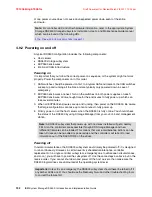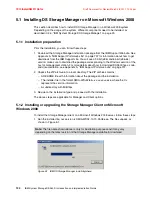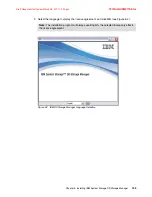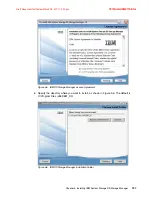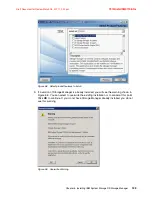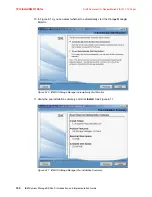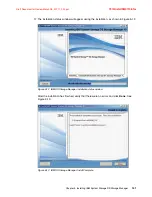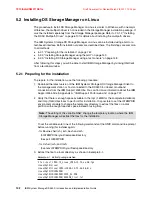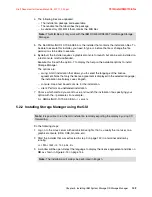
7914Cabling2-1908.fm
Draft Document for Review March 28, 2011 12:24 pm
128
IBM System Storage DS3500: Introduction and Implementation Guide
When configuring World Wide Name (WWN) based zoning, it is important to always use the
World Wide Port Name (WWPN), not the World Wide Node Name (WWNN). With many
systems, the WWNN is based on the Port WWN of the first adapter detected by the HBA
driver. If the adapter that the WWNN is based on happens to fail, and you based your zoning
on the WWNN, then your zoning configuration becomes invalid. Subsequently, the host with
the failing adapter then completely loses access to the storage attached to that switch.
Keep in mind that you will need to update the zoning information if you ever need to replace a
Fibre Channel adapter in one of your servers. Most storage systems such as the DS3500,
storage subsystem, and IBM Tape Libraries have a WWN tied to the Vital Product Data of the
system unit, so individual parts can usually be replaced with no effect on zoning.
For more details on configuring zoning with your particular switch, see the following IBM
Redbooks publications:
Implementing an IBM/Brocade SAN with 8 Gbps Directors and Switches, SG24-6116
Implementing an IBM/Cisco SAN, SG24-7545
Multiple fabrics
Depending on the size of your infrastructure, levels of required redundancy, and your budget,
you might want more than one switched fabric. Multiple fabrics increase the redundancy and
resilience of your SAN by duplicating the fabric infrastructure. With multiple fabrics, the hosts
and the resources have simultaneous access to both fabrics, and have zoning to allow
multiple paths over each fabric. There are many advantages to using multiple SAN fabrics:
Each server can have two or more HBAs. In a two-HBA configuration, each HBA can
connect to a separate fabric.
Each DS3500 storage subsystem can use separate host ports to connect to multiple SAN
fabrics, thus giving it a presence in each fabric.
Zoning in each fabric means that the host servers can have many paths to the DS3500
storage subsystem resources, which also means that the zoning has to be done in each
fabric separately.
The complete loss of one fabric means that the host can still access the resources through
the other fabric.
The multiple fabric increases the complexity, resiliency, and redundancy of the SAN
infrastructure. This, however, comes at a larger cost due to the duplication of switches, HBAs,
zoning administration, and fiber connections. This trade-off has to be carefully examined to
see whether your SAN infrastructure requirements require multiple fabrics.
Sample configurations
In this section we show three sample configurations with two host servers connecting to a
dual controller DS3500 storage subsystem through one or more SAN fabrics.
Dual SAN fabric configuration
Figure 4-36 on page 129 shows a configuration with two hosts connecting through two SAN
switches to a dual controller DS3500 storage subsystem. Because the SAN switches are not
directly connected together, each SAN switch creates its own separate SAN fabric (domain).
In this example, each host bus adapter has a single connection to only one controller in the
DS3500. A zoning configuration where each host bus adapter has a single connection to only
one controller in a dual controller DS3500 is known as a one-to-one (1:1) zoning
configuration. Some host operating systems and multipath device drivers require a
one-to-one zoning configuration. In this example, the two SAN switches can be replaced by a
Summary of Contents for DS3500
Page 2: ......
Page 5: ...iii Draft Document for Review March 28 2011 12 24 pm 7914edno fm ...
Page 789: ......



















